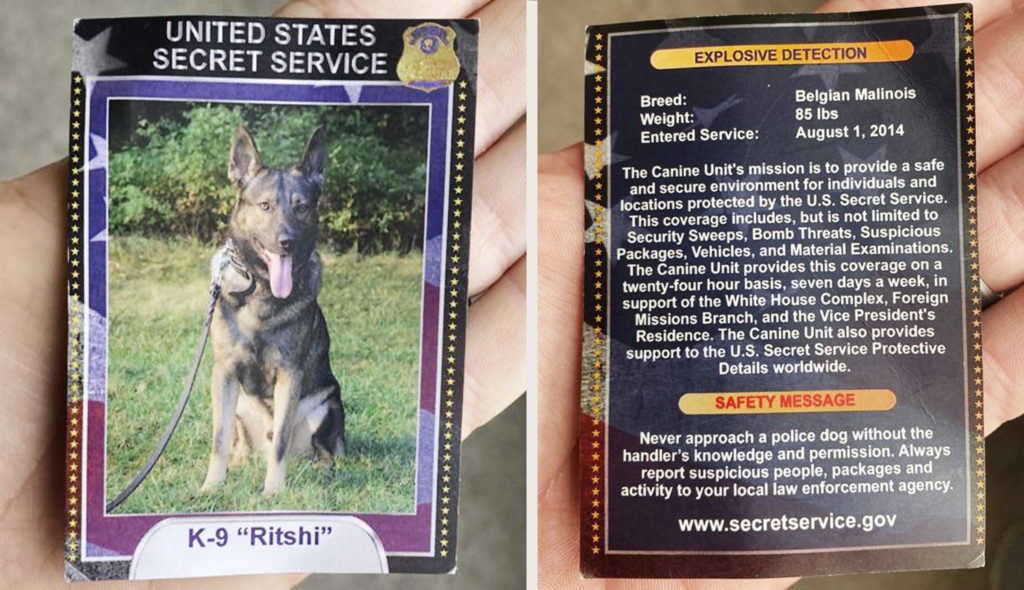
There’s something about wallpaper that brings out the remodeling instinct in a lot of wives. If you buy a house with wallpaper in it, it has to come down almost immediately. If you hung wallpaper a few years ago in your own house, chances are your wife will be tired of it by this point. So removing wallpaper DIY style goes near the top of the honey-do list.
Hanging wallpaper may very well be one of the worst jobs on the planet. Until you try to figure out the best way to remove wallpaper. Then there’s no question that it takes over as the worst job on the planet.
Staining concrete flooring is a messy job. Returning things to normal after the kids “wash” the car with motor oil is a disaster we hope you’ll never have to experience. But learning how to remove wallpaper is the equivalent of a 2-year-old’s birthday dinner combination of spaghetti and Blue’s Clues cake with bright blue frosting. (Yes, I have been stupid enough as a dad to allow that to happen.)
The good news is learning how to remove old wallpaper is not as dangerous as some other DIY dad projects, meaning you don’t run the risk of a hospital visit — probably. (Full disclosure: I have had to get multiple stitches while hanging wallpaper in the past. Don’t ask. But never while removing wallpaper, at least so far. Fingers crossed.)
Read through our steps to help you figure out the best way to remove wallpaper successfully. And if there is a God, hopefully, you won’t be hanging new wallpaper immediately afterward … that you’ll almost certainly be removing again in a few years. #CircleOfHell

How to Remove Wallpaper
1-Don’t Just Say, I’ll Hang New Wallpaper Over the Old Wallpaper
Yes, it’s tempting to skip the removal process and just paste the new layer of wallpaper over the old layer, especially if you’re trying to figure out how to remove wallpaper from drywall without tearing the paper layer on the drywall.
However, the glue for the new wallpaper may not stick to the old wallpaper, especially if it’s vinyl, foil, or textured. If the old paper has any wrinkles or loose seams, the new paper soon will pull away from the wall.
Occasionally, you can hang new wallpaper over old paper successfully, but it ends up in disaster a few years down the road more often than not.
2-Figure Out What’s Behind the Old Wallpaper
The type of permanent wall behind the old wallpaper plays a role in the best way to remove wallpaper.
- Drywall: Drywall is common in any home built or remodeled in the last few decades. It has a paper/cardboard layer over a substance that resembles chalk.
- Plaster: Plaster is a liquid wall covering that hardens over a wood lathe. It is common in homes at least four decades old, but not in newer homes. Plaster usually is not as smooth as drywall, which can make wallpaper removal tricky.
If you have drywall, damaging the paper/cardboard layer during wallpaper removal can cause significant problems, so use care. If the paper/cardboard starts to peel with the wallpaper, try using a razor blade to slowly work the wallpaper away from the drywall paper layer as carefully as possible. Once finished, use a spackling compound to repair the tears in the drywall paper/cardboard.
With plaster, avoid using too much water and stripping liquid. This may soak into the plaster and could cause it to crumble after drying. Chances are you’ll need someone who specializes in plaster to come and fix the wall.

3-Prepare the Room
Because learning how to remove wallpaper is a messy job, you’ll want to cover furniture, carpeting, wood floors, and baseboards. Use plastic sheets, drop cloths, and painter’s tape to secure the protective layer. If you have an outlet along the wall where you’ll be working, cover the entire faceplate in painter’s tape to protect it from liquid.
You’ll be using water as the primary tool in the best way to remove wallpaper, and the parts you peel from the wall will want to stick to everything. Without a drop cloth or other protection for the items in the room, the mess you’ll make will leave you in big trouble. Trust us. We speak from a horrible, horrible experience.
4-Pray That You Have Strippable Wallpaper
We mentioned earlier that wallpaper was the worst thing on the planet. We’d like to amend that statement to admit there are exceptions. For example, if you’re fortunate enough to have used strippable wallpaper in the previous project, wallpaper’s reputation as a giant pain in the ass is exaggerated.
Strippable wallpaper also called temporary wallpaper or peel wallpaper, is a newer type of paper that pulls away from the wall easily versus other types of wallpaper. Using strippable wallpaper makes learning how to remove wallpaper from drywall an almost enjoyable process.
Just use a paint scraper or putty knife to catch the edge of a sheet of the strippable wallpaper. Once you found an edge that you can grab, start pulling. If the wallpaper pulls away in large chunks without leaving residue behind, you have strippable wallpaper. Thank whatever higher being you believe in — because you just saved yourself hours of work — and start removing it.
Occasionally, even strippable wallpaper will catch on the wall a little bit. Use a putty knife or a razor blade to gently loosen the parts that are sticking.

5-Move to Water and a Stripper, and Prepare for a Long Process
If the paper does not come off easily, you don’t have strippable paper. You can let out a heavy sigh because your short project just became an all-day job, complete with scraping. (Hurray for hand blisters.)
Start with hot water alone. If it doesn’t work, add a wallpaper stripper product to the water. If you choose a liquid stripper, mix it with hot water in the concentration specified on the product. There are also gel strippers, which are pricey, but which work nicely on drywall if the cardboard/paper layer is peeling along with the wallpaper.
Use a paintbrush or a spray bottle to apply the stripper/water mix to the wallpaper. Don’t apply it to an extremely large area at once, or it will dry before you can begin scraping. We’d recommend no more than about 4 square feet at a time.
Let the product sit for a few minutes before trying to scrape it off with the scraper.
Always start at the top of the wall and work your way downward. Additionally, wear gloves and goggles if using chemical strippers.
6-It Won’t Come Off
Some wallpapers do not soak up the wallpaper stripper and water mixture well. They may have a plastic film over the top (which is used in wallpaper that’s washable). They may be older types of wallpaper. They may have two layers, one of which is a vinyl outer layer that peels easily and an inner layer that refuses to pop loose.
If so, try applying a heavier coat of the liquid mixture or a gel stripper. Let it sit longer, maybe up to 10 minutes, and try scraping again.
If it still doesn’t work, lightly sand the wallpaper to create scuffs, which may allow the liquid mixture to penetrate the wallpaper easier. You also could use a wallpaper scorer tool to puncture the paper over a large area in a short amount of time.

7-It Still Won’t F***ing Come Off
If the wallpaper still is not pulling away from the wall properly, go ahead and let loose with a string of profanity. Be creative. Try putting together some new combinations. Use nouns as adjectives. Curse the inventor of wallpaper glue. (It’s Ferdinand Sichel, in case you’re curious. We’re sure you can come up with multiple rhyming profanities for Sichel.)
Hopefully, it’ll make you feel better.
It’s probably time to employ a wallpaper steamer. This method works on even the most stubborn wallpaper, but it’s a giant hassle, creating an unprecedented mess. You have to move slow, giving the steamer time to penetrate the paper. You may have to score the wallpaper to accommodate the steam. And using the steamer is hot and uncomfortable.
Other than that, it’s a joy.
Always wear goggles and non-slip gloves when using a wallpaper steamer. Hold the steamer pad against the section of wallpaper you want to remove for at least 30 seconds. Then scrape the loosened paper.
Using the steamer sucks, but it’s better than tearing down the entire wall and rebuilding it from scratch, so there’s that.
8-Clean Any Excess Adhesive
If any wallpaper glue remains on the wall, you can purchase TSP Heavy Duty Cleaner, mix it with water, and clean the glue using a sponge.
Should you have gouged the wall anywhere during removal, use spackle to fix the gouges and smooth the wall. Do a good job here. Yes, you will see it all afterward. New wallpaper or paint does NOT fix walls.
Now you’re ready to add new wallpaper … or, better yet, a coat of paint. (But we’ll suggest waiting for another day to start that project.)
Best Products for How to Remove Wallpaper

Gorilla Grip Slip Resistant Gloves
These gloves have a polymer palm that resists liquid absorption, meaning you can maintain a good grip on your tools while working around water and mess, which is a given when you’re trying to figure out how to remove old wallpaper. There are five pairs in this pack, which is handy because they’re useful for almost any kind of DIY dad job.

Pinnacle Mercantile Plastic Spray Bottles
Do you actually need four empty spray bottles? Do you have kids who find a way to create unspeakable messes involving unrecognizable goo in every room in the house … sometimes multiple times per day? Then, yes, you need four — one for the best way to remove wallpaper and three for other daily emergencies. They come in handy, even just for spraying plants, or each other.

WP Chomp Wallpaper Scraping Tool
When scraping wallpaper, the quality of your tool plays a big role in whether you can finish the job after several hours without hand cramps and blisters, or whether you give up halfway through the job and put your house up for sale instead of trying to finish removing the wallpaper.

Red Devil 4045 Utility Patcher and Scraper
If you’re trying to figure out how to remove wallpaper from drywall, you’ll need a tool that simplifies patching the tears and gouges you put in the drywall. This multi-purpose tool works for spackling, and it works for scraping stubborn wallpaper.

Roman Professional Wallpaper Removal Kit
If you prefer a kit that has all of the basic tools you need to begin removing wallpaper, this one includes a scraper, a wallpaper scoring tool, and a liquid stripper. This is easier than buying them separately. Plus it’s just cool to own a kit of anything.

WP Chomp Wallpaper Stripper
This gallon of wallpaper stripper is recommended to remove up to 400 square feet of wallpaper. (Let’s hope you don’t have that much wallpaper removal on your honey-do list.)

Zinsser Wallpaper Stripper Gel
For looking at how to remove wallpaper from drywall, a gel-based stripper may give you better results than a liquid stripper, causing less potential damage to the cardboard/paper layer on the drywall. You will need a paintbrush or roller to apply it, rather than a spray bottle.

Wagner Spraytech Wallpaper Steamer
If you have to make use of a steamer to remove the wallpaper for your project, you might as well go big. This steamer can carry 1 gallon of water, so it’s the equivalent of the biggest power tool on the block. At least you’ll feel manly while scraping soggy wallpaper off the wall. Yuck.

Wagner 915e On-Demand Power Steamer
When portability is key, the 915e steamer is small enough to carry easily. It has the capacity for enough water to allow you to work for 45-ish minutes before it needs a refill. For most people that’s more than long enough. After all, if you can stand to work that long continuously doing a horrible job like scraping wallpaper, you deserve some sort of medal.

TSP Surface Cleaner and Wallpaper Glue Removal
If you have luck similar to mine, there will be quite a bit of wallpaper glue left on the wall after you remove the wallpaper. Use TSP mixed with water to finish the job– properly.

Red Devil Lightweight Spackling
Spackling can be almost as big of a mess as wallpaper removal, which is what makes this Red Devil spackle such a handy product. It is premixed and goes on pink, so you can clearly see where you’ve added it. As it dries, it’ll turn white.
Although we only recommend picks we really love, we may earn a commission on purchases made through links from our site.


















